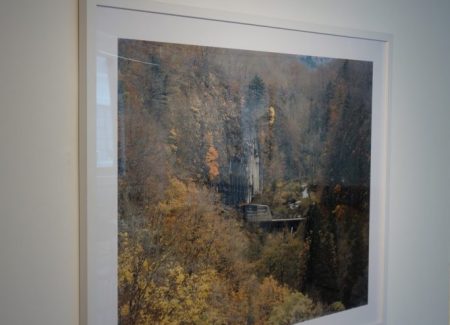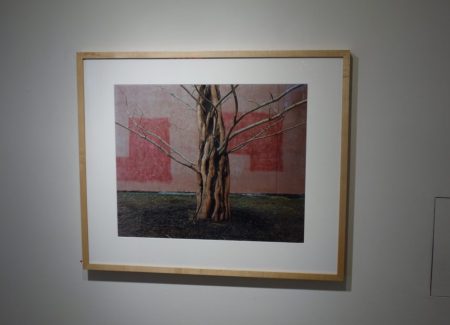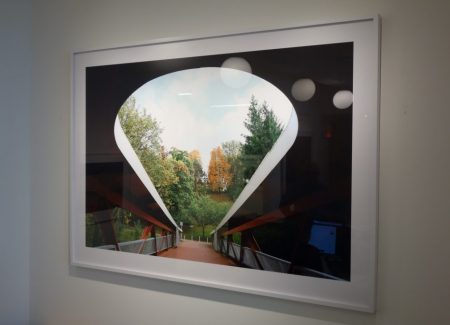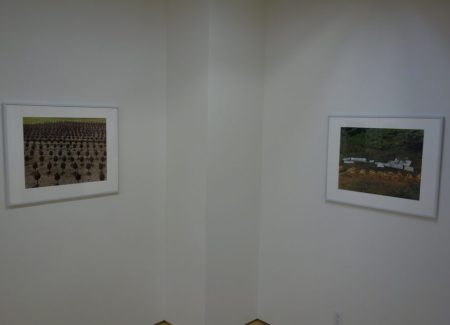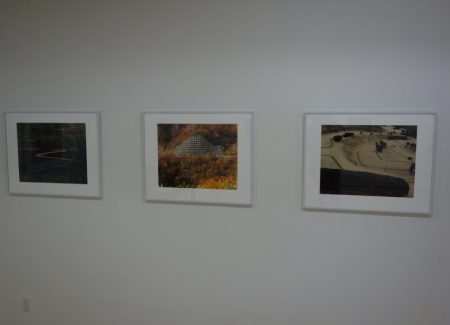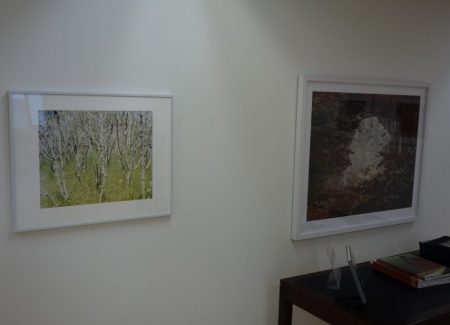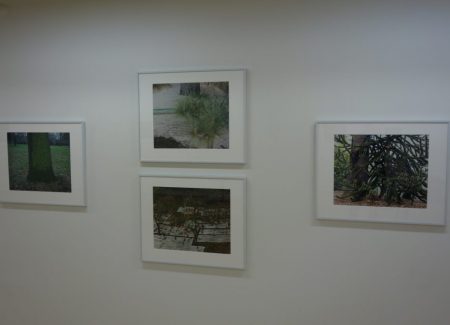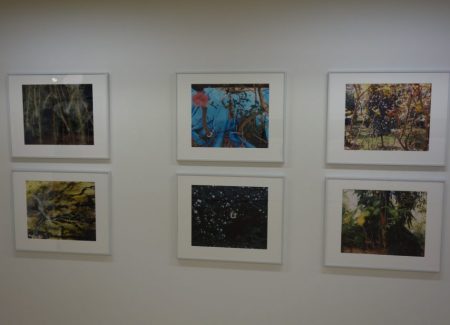JTF (just the facts): A paired show consisting of a total of 25 color photographs, generally framed in white and matted, and hung against white walls in the main gallery space and the entry/reception areas.
There are 13 works by Toshio Shibata – all of these prints are either chromogenic prints or Lambda prints, made between 2006 and 2016. Physical sizes include 20×24, 32×40, 40×50, and 40×60 inches, in editions of 5, 10, and 25.
There are also 12 works by Yoko Ikeda – all of these prints are chromogenic prints, made between 2008 and 2018. All of her prints are sized 20×24 inches, in editions of 10.
(Installation shots below.)
Comments/Context: This smartly paired exhibit of the landscapes of the Japanese photographers Toshio Shibata and Yoko Ikeda offers a side-by-side opportunity to compare two approaches to making the broad sweep of the landscape genre more personal. While nearly all the images in this show (made by both artists) are studies of trees, the aesthetics of the pictures, and the corresponding mindsets behind them, are surprisingly divergent. The interleaved combination of the two makes for an engaging back and forth, as their two perspectives wrestle for our attention.
At this point, Shibata is clearly one of the elder statesmen of the contemporary Japanese landscape, having been making tightly controlled images of the land (in both black and white and color) for nearly forty years. The nuanced intersection of the manmade and the natural has consistently informed his compositions, and the selections in this show highlight his eye for the subtle formal contrasts that occur when humans intervene in the contours of the land.
Shibata’s compositions have a core sense of order, with the engineered precision of structures like bridges, highway overpassess, and retaining walls given reverential place within the wider natural environment. These are intrusions that have been set with empathetic care, with the hope that harmony can be achieved between the necessary human intervention and what surrounds it.
The same can be said for Shibata’s views of farms, orchards, and other organized landscapes. Trees march off in straight lines and tight formations to optimize the output, and the undersides of the apple trees are draped with reflective tarps to redirect the sunlight back up at the ripening fruit. Cut logs ready for the lumber yard or the paper mill are stacked in perfectly aligned piles and rice fields are harvested to a short stubble, the cut stalks then hung on regularly arranged poles to dry like the truffula trees from The Lorax. Even a dormant season mini golf course feels arranged with thoughtful intention, the hedges shaped and pruned to rounded smoothness and the dry yellow grass of the winter mown to softness. Shibata’s frames consistently find this order, and revel in its symbiotic efficiency and structure.
Yoko Ikeda’s landscapes are much more impressionistic, staying close in to her subjects and filling her pictures with frontal veiling and interruption. This approach makes us feel like we are inside the very trees and bushes that jut out toward the lens, the branches surrounding us and blurring expressively from such close proximity.
Ikeda clearly has a different sense for space and distance than Shibata, repeatedly moving into intimate zones rather than staying afar or aloof. Her compositions are often built in layers, encouraging us to peek through the curtain of dappled leaves or flowering greenery to see some other feature (a different natural specimen, a house) in the background. Other times the frontal blur is in effect the subject, with the crisp background providing a surrounding foil to the deliberate uncertainty she has pushed into our view.
This aesthetic approach gives her photographs much more personal power, especially when she is observing the gnarled textures of a tree trunk or the pink blanket of petals covering the underside of a tree. Getting in tight allows her to examine surfaces with more detail, letting thickets of white sticks fall to blur in the sunlight or savoring the prickly needles of twisting evergreen boughs. It also gives her the freedom to play with strong saturated color, like the rich blue tarp underneath a flowering bush (offset by a lovely blurred blossom in the upper lefthand corner) or the splash of red found on a paint marked tree trunk with a dappled yellow leaf reaching in from the side.
Hung together, the two views of the land feel richly complementary, the area of focus and the intellectual approach moving in and out as the photographs intermingle. Decades ago, we might have attempted to understand this show as a masculine/feminine contrast; in today’s world, we know better that those boundaries of style and conceptual approach don’t necessarily align with any specific gender. Instead, what we have is two sets of eyes (and two artistic brains) that arrange the available landscape into alternate realities – one that focuses on how large scale structure in nature finds balance, the other on how immediate experiential interaction with nature can find that same kind of harmony. In the end, both are humbly searching for a sense of spiritual equilibrium, where man and nature can intuitively coexist.
Collector’s POV: The prints in this show are priced as follows. The Shibata prints are priced between $3500 and $15000, based on size and place in the edition, while Ikeda’s prints (in the size shown) are $1200 each. Shibata’s prints have shown up intermittently at auction in recent years, with prices ranging from roughly $1000 to $12000. Ikeda’s prints have little secondary market history at this point, so gallery retail remains the best option for those collectors interested in getting to know her work better.
